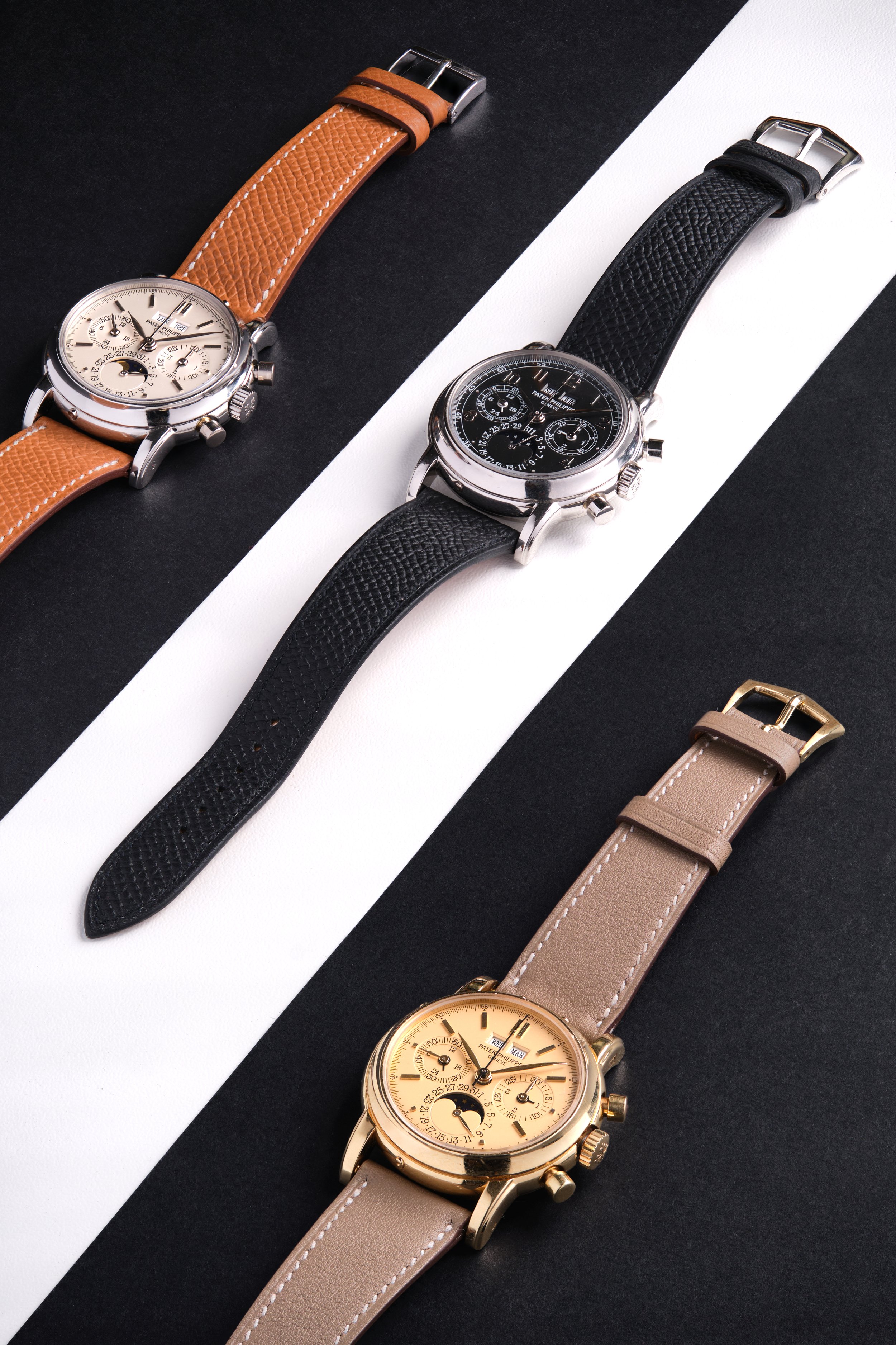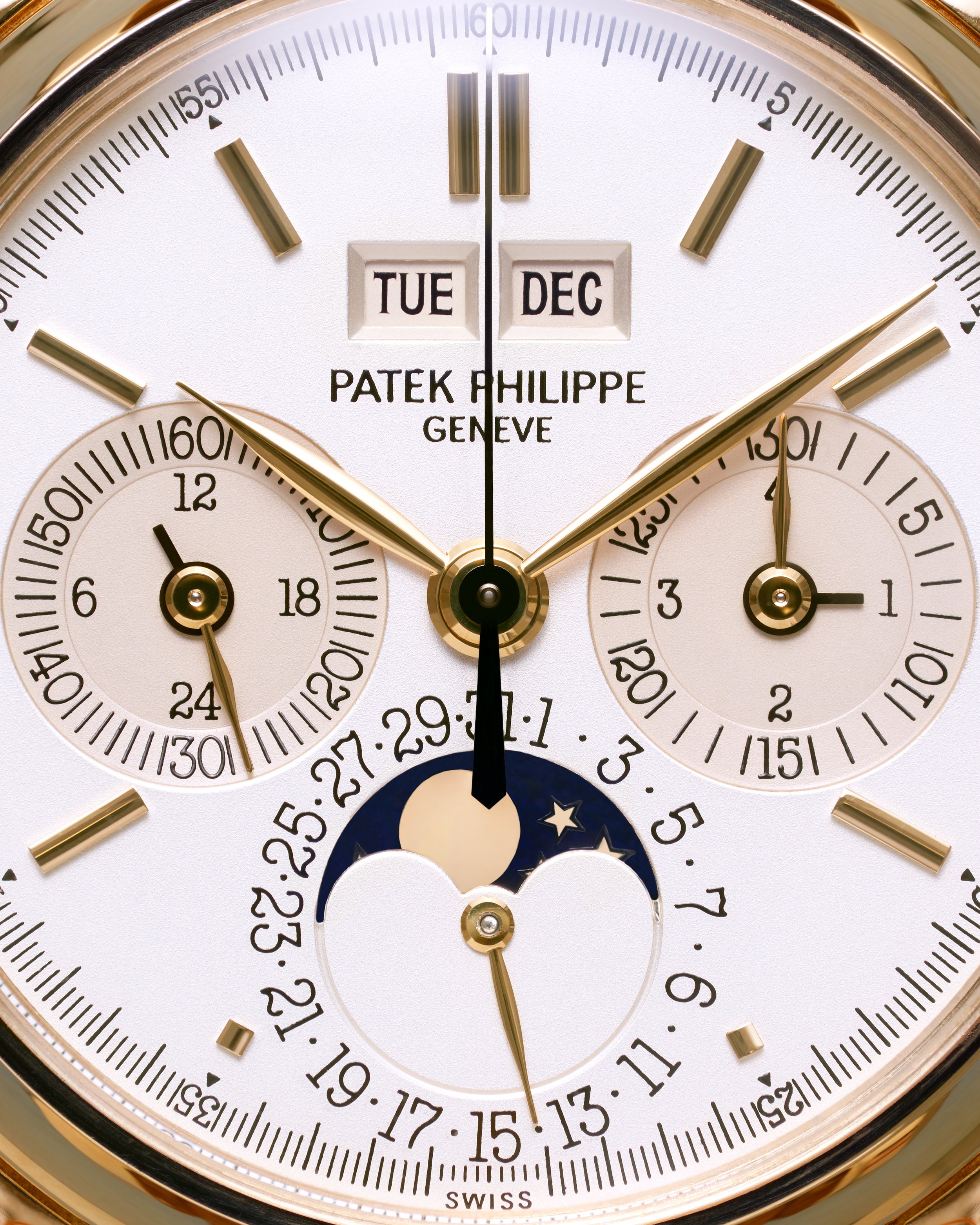quick take : collecting the Patek Philippe ref. 3970
A lot has been written on the reference 3970. Here, here, here and here.
But we took some nice pics of these watches so we figured we might as well take a crack at writing something about this extraordinary reference too.
Long undervalued, sometimes even frowned upon due to its size and production quantities, collectors are now picking up on this horological gem - making it more and more difficult to get your hands on a nice honest example.
In this latest piece of what-not-to-call Horological journalism, we’ll be diving into some of the rare regular production variants of a reference that was long ignored by the collecting world : the Patek Philippe ref. 3970 - and why it’s such a fun watch to wear and collect.
Before we begin, let’s take a little refresher course on the different production series of the 3970 :
1st Series (1986-1987)
The First Series 3970 launched the reference in 1986, with a serial range from 875’000 to 875’100 – the first batch of 3970s to leave the factory were encased in a snap back yellow gold case (meaning the caseback is pressure fitted rather than screwed in place). Some of these were also made with a sapphire snap-back, an estimated 20 of which were made (8 recorded). Both the 3970 and 3971 First Series were made with a two-tone dial and stepped subcounters. Most of these dials were replaced during service for 2nd Series dials, making an original First Series watch extremely hard to find. Note that the date discs of the first series are not American Typewriter font.
2nd Series (1987 – 1992)
The Second Series 3970 was first released in two variants, the 3970E and the 3971E – like its predecessor, the 71 had a sapphire caseback, and the 70 a solid back – this slowly transitioned and the 3970s were delivered with both a solid and a sapphire back. These casebacks howerer were screwed on rather than pressure fitted on, making the watch “waterproof” hence the E in the reference which stands for “étanche” in French. 2nd series were produced from serial range 875’100 to early 876’XXX. From this one can say there were close to 1000 made due to the movement range but estimates paired with case quantities ordered at the time estimates the quantities to slightly less.
The dial of the 2nd series also varies from the first series, maintaining the original design with leaf (or feuille in French) hands and baton indices, however, the sub-counters aren’t stepped as abruptly but at an angle, the dial also isn’t two-tone but opaline all out. The date discs shift to American typewriter font in the 2nd series.
The 2nd Series was made in all four metals, yellow, rose, white gold and platinum. Yellow being the most produced, then rose, platinum and white gold. The yellow gold is the most common many disagree on the exact number produced, most agree on 60 rose gold produced (of which 7 known 3971), 15 known white gold (of which 4 known 3971) and 11 known Platinum (no 3971P recorded). Few very rare doré (or champagne) dialed 3970s (and 3971) were also made in yellow gold. These dials are extremely rare, only 6 have been recorded. These dials are also sometimes referred to as gilt dials.
To check if a watch was born a second series, one can drop the watch off in service and check the dial code on the service quote, for example, dial code -051 is a second series dial for the 3970P.
3rd Series & 4th Series (1992 – 2004)
The 3rd and 4th series steer drastically from the other 3970s in terms of design – hands are changed from leaf hands to sword hands, and indices change to pointed rather than baton. The date discs also shifted to a non-serif font gradually between the 2nd and 3rd series. This was a period in which special orders were made, which makes collecting a lot of fun.
With this very light refresher course over, we can now have a look at what to collect. Of course, the obvious answer would be to find a perfectly mint, full set, first series – however these are increasingly difficult to find with the success of the reference (we took a closer look at this one in another article). In my opinion, a rose gold second series is something very interesting to collect at the moment, few were produced and it has that extra little thing compared to the more produced yellow gold.
Due to the increase in production quantities of the 3rd and 4th series I would steer clear from regular production models and try to focus on special orders and unique dials. Of course the vintage collection pieces, “Saatchi” editions, Ovitz and Clapton pieces are considered the grails, but more subtle variations like the 5004 dialed 3970s are also a marvel to collect and command a slightly lower premium than the aforementioned.
For the longest time, I was convinced a black dialled 3970 would look smaller on the wrist but in my opinion, the black dial really pops and ends up making the watch look a little bigger on the wrist.
All in all, the reference 3970 is a grail for many collectors, its size, heritage and variety in production allows for a collector if he choses to solely collect this reference and still have a wide variety of different styles and looks to chose from. From metal bracelets to luminous hands and applied Breguet numerals, the 3970 is a reference that will never cease to amaze us !







